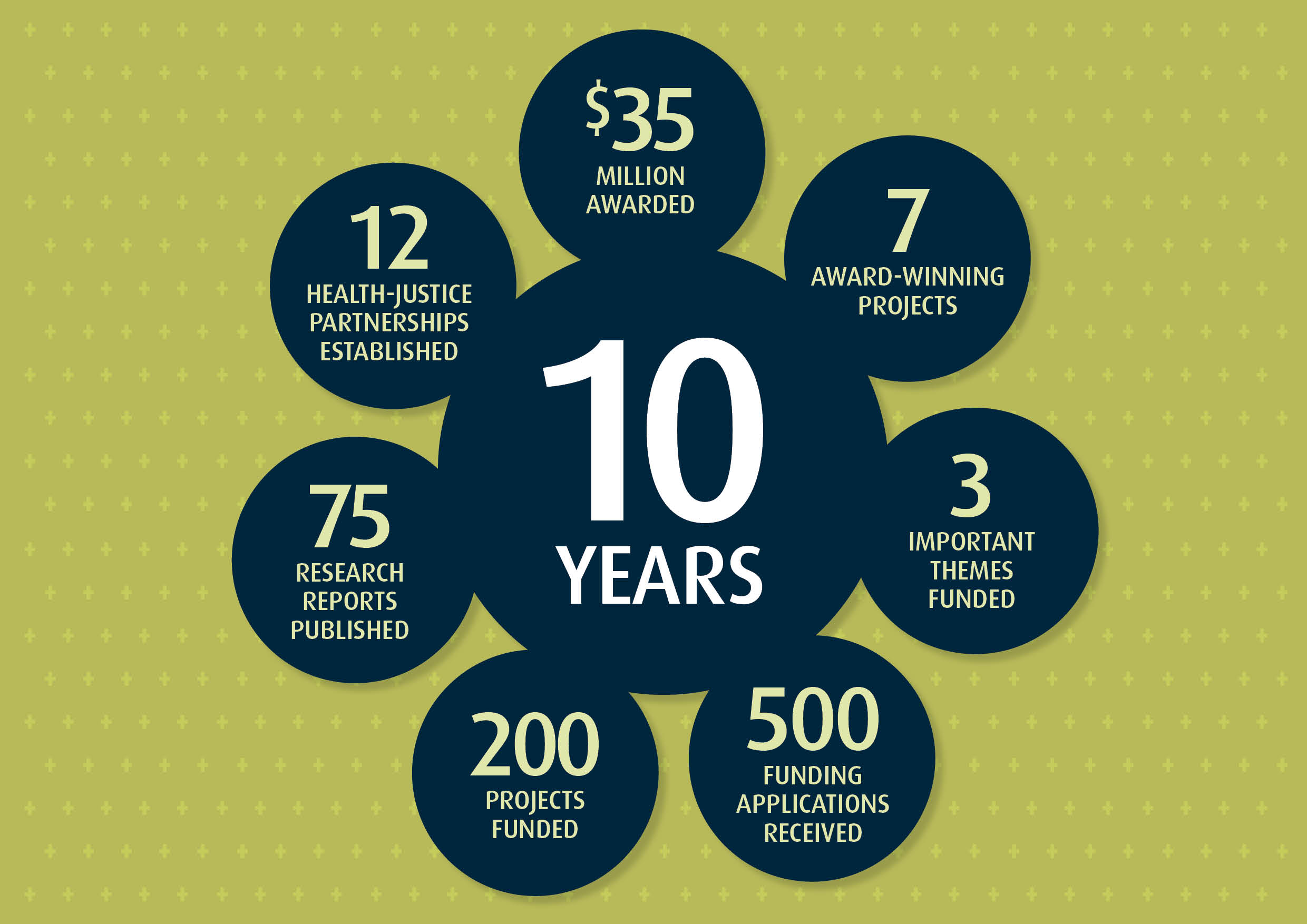On this PageThe Victorian Legal Services Board and Commissioner are independent statutory authorities responsible for the regulation of the legal profession in Victoria. We are accountable to the Victorian Parliament. The responsible minister is the Attorney-General, The Hon. Sonya Kilkenny MP.
Fiona McLeay is the Victorian Legal Services Commissioner and CEO of the Board.
About the Victorian Legal Services Commissioner
The Victorian Legal Services Commissioner was originally established in 2005 under the Legal Profession Act 2004. The functions and powers of the Commissioner now come under the Legal Profession Uniform Law Application Act 2014.
The Commissioner aims to:
- develop and maintain an independent, impartial and accessible system for managing complaints against legal practitioners
- be accountable and transparent in dealing with our stakeholders
- enhance community and consumer understanding of legal practice
- work with the legal profession to ensure that legal services in Victoria meet the highest standards of excellence
- assist practitioners in understanding, managing and meeting consumer expectations, and
- continually identify best practices in the provision of legal services.
About the Victorian Legal Services Board
The Victorian Legal Services Board is an independent statutory authority, responsible for regulation of the legal profession in Victoria. Originally established under the Legal Profession Act 2004, the Board’s role and functions now come under the Legal Profession Uniform Law Application Act 2014.
The Board’s aims are to:
- ensure the effective regulation of the legal profession and the maintenance of professional standards
- address the concerns of clients of law practices and lawyers through the regulatory system and provide for the protection of consumers of legal services
- ensure the adequate management of trust accounts, and
- ensure that the Legal Profession Uniform Law is implemented effectively in Victoria.
Regulatory Approach Statement
Our Regulatory Approach Statement provides a clear statement of how the we seek to perform our role as regulators of the legal profession in Victoria. It outlines our operational approach to delivering on our legislative responsibilities by explaining how we set regulatory priorities, make resource allocation decisions and apply the range of regulatory tools at our disposal.
The legislative requirements that we must meet are set out in the Legal Profession Uniform Law Application Act 2014 and the Legal Profession Uniform Law (Schedule 1 to the Act). We seek to discharge our legislative responsibilities in accordance with the objectives of the Act and the Uniform Law and in a way that:
- promotes consistency amongst Uniform Law jurisdictions, including through directions and guidance from the Legal Services Council and the Commissioner for Uniform Legal Services Regulation; and
- is consistent with Victorian Government policies and objectives, including the Attorney-General’s Statement of Expectations.
We understand that lawyers and the broader Victorian community expect that we will be efficient and effective regulators of the legal profession. As such, we target our regulatory resources towards activities that address the areas of greatest potential harm to consumers of legal services. In doing so, we aim to strike a balance between responding to immediate issues and identifying emerging areas of concern.
Immediate issues
Responding to information we receive through complaints about lawyers, or from lawyers directly, are core activities that our staff perform on a daily basis. In resourcing these immediate issues, we prioritise issues of high risk while looking for ways to streamline our response to lower risks of harm.
Emerging issues
We use the data collected in the course of our work to identify future trends, and to design programs of regulatory work to proactively address emerging risks. These programs may also include strategic education to the profession. In seeking to strike a balanced approach to resourcing immediate and emerging issues, we are mindful that we operate in partnership with other regulators under the Legal Profession Uniform Law framework.
Therefore, we appreciate that we need to commit resources towards improving consistency in the regulation of the legal profession across Uniform Law jurisdictions, in line with the strategic priorities of the Legal Services Council.
You can download the Regulatory Approach Statement here.
Our strategy
Our corporate strategy illustrates our clear direction towards ensuring we are an effective regulator of the Victorian legal profession.
Our goal is to maintain and enhance public trust and confidence in the legal profession in Victoria. We do this because the integrity of the legal profession is fundamental to the legitimacy of the justice system and the maintenance and protection of the rule of law.
We achieve these goals through our approach to regulating the legal profession, our stewardship role, and our organisational aims.
Our Corporate Plan 2022-2024
This document outlines our work to protect and empower consumers, improve legal practice and ethics, and improve access to justice.
Our commitments and behaviours
The way we work is guided by the Victorian Public Sector values, and our own commitments and behaviours. Our organisational commitments, shown below, were co-created with the whole of our organisation, and guide our actions and decision-making processes.

Board members
The Board comprises seven members - a Chairperson, three lawyer members and three who are not lawyers.
The Chairperson and non-lawyer members of the Board are nominated by the Attorney-General and appointed by the Governor in Council for a four-year term. One non-lawyer member must represent the interests of consumers, and one must have experience in financial or prudential management.
The lawyer members are appointed by the Governor in Council on the recommendation of the Law Institute of Victoria and the Victorian Bar, also for a four-year term. Two lawyer members are solicitors (non-advocate members) and one is a barrister (advocate member). The day-to-day activities of the Board are managed by the Chief Executive Officer.
Mr Sam Hay KC - Chairperson

Sam is a barrister with over 20 years’ experience in a broad range of commercial, administrative and common law matters. He was appointed Senior Counsel in 2019. He previously served as the President of the Victorian Bar Council and as a member of the Victorian Legal Admissions Committee.
Ms Gabi Crafti SC - barrister (advocate member)

Gabi is a senior counsel at the Victorian Bar practising in commercial litigation, particularly in the fields of insurance law and other aspects of financial services law, construction law and corporations law. She acts extensively for insurers, superannuation funds, banks and other financial institutions, financial advisory services, principals and contractors in major construction and infrastructure projects, and government departments and agencies. Prior to joining the Victorian Bar, Gabi was a commercial litigation solicitor at two of Australia’s leading national law firms and an Associate at the Federal Court of Australia. Gabi is a former member of the Victorian Bar Council and the current Chair of the Insurance and Professional Negligence Section of the Commercial Bar Association.
Ms Liz Harris – solicitor (non-advocate) member

Liz is a lawyer who has specialised in consumer complaints relating to lawyers, acting for both lawyers and consumers. She is a recognised expert in costs law as co-author of Quick on Costs, the pre-eminent Australian text. She has conducted her own legal practice, been a sessional member of the VCAT Legal Practice list, a member of the Victorian Supreme Court Costs Committee, chair of the LIV Advisory Board on costs law specialisation, and chair of LIV Cost Lawyers section. Liz conducts a consultancy advising government and corporate legal departments about best practice in managing external lawyers. She is regularly engaged as an expert witness regarding best practice in management of legal work and costs in class actions and other significant litigation. Liz is also a member of the Legal Services Council.
Ms Jacinta Lewin - solicitor (non-advocate member)

Jacinta is a Principal Lawyer at Maurice Blackburn Lawyers in the Social Justice Practice. She has a diverse range of experience across the profession. She has worked as an expert in federal worker’s compensation law managing a national law firm practice before expanding her experience through working at a Victorian government statutory human rights body (VEOHRC). Presently she works in complex litigation with a focus on tort and administrative law. Her current work entails collaborating with stakeholders within and outside the legal profession to improve access to justice outcomes for her clients. Jacinta is the current Co-Chair of the Law Institute of Victoria Human Rights Committee and a member of the Law Council of Australia’s National Human Rights Committee. She has previous experience in governance roles within the Victorian community legal sector. Jacinta is particularly interested in diversity and inclusion initiatives that create a strong legal service culture to support practitioners and the community. In 2022 she received the Law Institute of Victoria President’s Award for Outstanding Service.
Mr Glen Noonan - lay member

Glen is an experienced non-executive director, board chair, chair of audit risk and finance committees, professional services partner CEO and Adjunct Professor. He is the current CEO of Diabetes Victoria where he provides strategic direction and leadership to reduce the impact of all types of diabetes on individuals, families, communities, health systems and society.
Previously Glen was a Senior Partner with PwC where he worked for 33 years, including 24 years as a Partner. He held a range of leadership roles and has extensive experience in digital transformation, strategy, growth, commercial and financial management, risk and audit.
Glen is a Chartered Accountant and Graduate of the Australian Institute of Company Directors.
Dr Lynne Williams AM – lay member

Lynne is an economist with over 30 years’ experience in the public sector. She is the Acting Chair of the Essential Services Commission of South Australia, a Commissioner with the Commonwealth Grants Commission, Chair of the Victorian Judicial Entitlements Panel, Board member of the Melbourne Business School, and Principal Fellow and Board member at St. Hilda's College. Lynne has previously held senior executive roles within several government departments and is the former Chair of the Victorian Government Procurement Board. Lynne has Masters degrees in economics from the University of Melbourne and the London School of Economics, a PhD from Monash University and is also a Member of the Australian Institute of Company Directors and a Fellow of the Institute of Public Administration Australia.
Ms Catherine Wolthuizen – lay member

Catherine is the Energy and Water Ombudsman (Victoria) and has a track record of leadership in Australia and the UK, with a particular focus on dispute resolution and fair outcomes in regulated markets. Before joining EWOV, Catherine held positions as the Customer Advocate at NAB, Board Director of the Australian Telecommunications Industry Ombudsman, panel member at the Australian Financial Services Ombudsman, Ombudsman with the UK Financial Ombudsman Service, Chair of the Economic Abuse Reference Group, and member of the UK Legal Services Consumer Panel.







